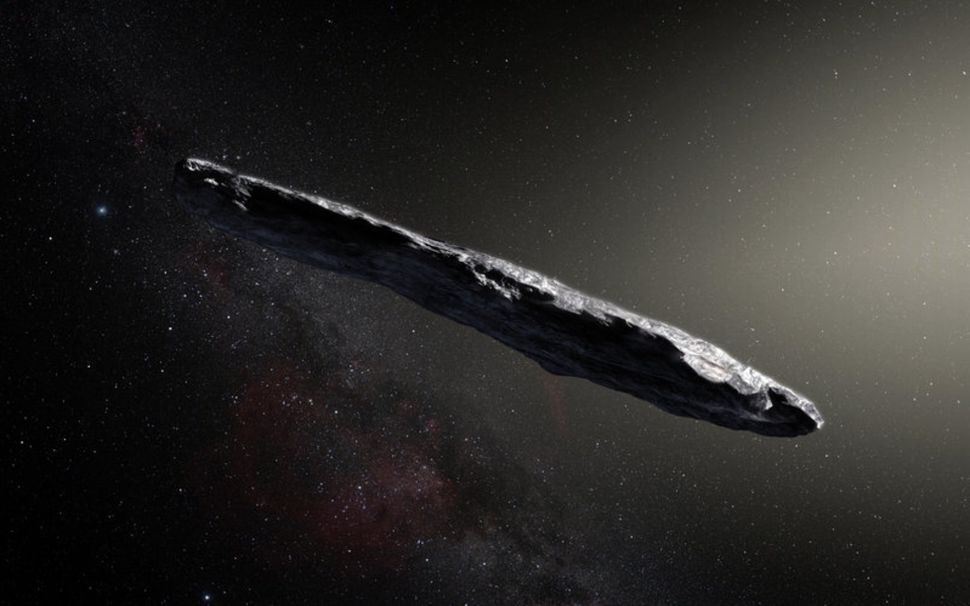Science
Related: About this forumA Second Interstellar Visitor Has Arrived in Our Solar System. This Time, Astronomers Think They Kno
A Second Interstellar Visitor Has Arrived in Our Solar System. This Time, Astronomers Think They Know Where It Came From
By Rafi Letzter - Staff Writer a day ago Space
When 'Oumuamua passed through our solar system in 2017, no one could figure out where the object came from. But astronomers think they've worked out how Comet 2I/Borisov got here.

An artist's depiction of the first identified interstellar object, 'Oumuamua.(Image: © M. Kornmesser/ESO)
For the second time ever, astronomers have detected an interstellar object plunging through our solar system. But this time, researchers think they know where it came from.
Gennady Borisov, an amateur astronomer working with his own telescope in Crimea, first spotted the interstellar comet on Aug. 30. His find made the object the first interstellar visitor discovered since oblong 'Oumuamua flashed through our solar neighborhood back in 2017. Now, in a new paper, a team of Polish researchers has calculated the path this new comet — known as Comet 2I/Borisov or (in early descriptions) as C/2019 Q4 — took to arrive in our sun's gravity well. And that path leads back to a binary red dwarf star system 13.15 light-years away, known as Kruger 60.
When you rewind Comet Borisov's path through space, you'll find that 1 million years ago, the object passed just 5.7 light-years from the center of Kruger 60, moving just 2.13 miles per second (3.43 kilometers per second), the researchers wrote.
That's fast in human terms —— about the top speed of an X-43A Scramjet, one of the fastest aircraft ever built. But an X-43A Scramjet can't overcome the sun's gravity to escape our solar system. And the researchers found that if the comet were really moving that slowly at a distance of no more than 6 light-years from Kruger 60, it probably wasn't just passing by. That's probably the star system it came from, they said. At some point in the distant past, Comet Borisov lively orbited those stars the way comets in our system orbit ours.
More:
https://www.livescience.com/mysterious-comet-interstellar-krueger-borisov.html
Nitram
(22,794 posts)objects such as comets and asteroids.
Igel
(35,300 posts)On the other hand, Kruger 60 is a red dwarf binary, so it might not have been a planetary system but an interaction between the two stars and the object that sent the snowball flying in our direction.
Great, now we have to hurl a snowball back, otherwise it's just humiliating.